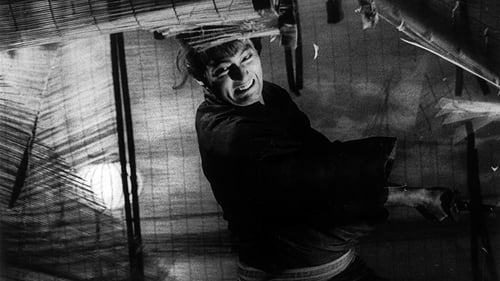
El samurái Ryonosuke siente una insana fascinación por el poder mortal de su katana y va por la vida acumulando cadáveres, con o sin motivo. Eventualmente lo contratan como mercenario, pero incluso cuando está sin trabajo, no tiene inconveniente alguno en matar por puro placer.

The Domain: Kanda Festival Showdown
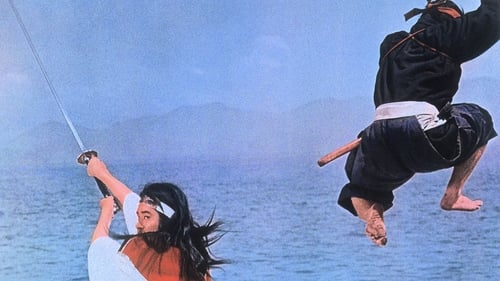
The fifth and final installment with the build up of the epic battle between Sasaki Kojiro and Miyamoto Musashi. With all the familiar characters making appearances: Otsu (Musashi's great love), Akemi, Matahachi (his former fellow soldier), old lady Osugi (still doggedly trying to defeat Musashi), and even the return of Priest Takuan (the man responsible for his journey towards enlightenment). But most of all, the boastful, long-haired and long-sworded Sasaki Kojiro.

The continuing adventures of the Jirocho gang.
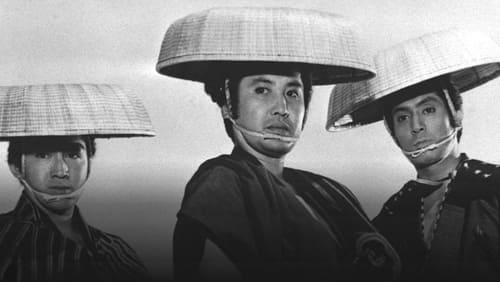
A tale of three Yakuza gamblers who traveled Japan during the samurai era living by their wits and sword skills. Told in 3 separate vignettes, each part tells the story of a different drifter’s life. Part 1: A man is on the run after killing two Hasshu Officials to avenge his Boss. He must make a life or death decision as he is asked to protect a gang from attack. Part 2: A pair of gamblers chased out of a crooked game must fight not only their pursuers, but the ghosts of their pasts as well. Part 3: A wanderer who wants to live according to the Yakuza Code, but is not sure that he can do so when asked to save a town from an evil official.

Organized thieves battle against the Shogun’s ruthless ruling in attempt to get back their land.

In Osaka during the Edo period, ruler Sanada Yukimura was in losing position, fearing Toyotomi's blood descendents would end, he impregnates one of five Shinano female ninja with the seed of Toyotomi Hideyoshi in hopes of continuing the bloodline. Princess Sen and the five female ninja escape from Osaka castle by blending in with the handmaidens. Lord Tokugawa Ieyasu who was supposed to rule all under the heavens was informed of this secret. So Ieyasu orders five samurai of the Iga Ninja clan (brought by Hattori Hanzo) to stop the Toyotomi bloodline by killing the Kunoichi ninja. An attack of ninja magic arts unfolds in a battle of the sexes.

In this gritty tale of gamblers battling in the samurai era, Okawa Hashizo gives perhaps his greatest performance as a gambler returning to his home town. Swearing allegiance to his fiancée’s father, a decent boss, he had taken to the road after a gang fight until things cooled down. While honing his sword skills in his travels, everything in the town had changed and he descended into a virtual hell of violence. Opponents were being slaughtered by a former samurai ‘Bodyguard’ played by Tanba Tetsuro at the height of his amazing career. While these two master swordsmen are fated to meet, before that can even happen they must survive one of the longest, bloodiest swordfights in movie history!

Four ninja are hired to fight against the Shogunate’s plot to abolish the Gamo Clan, the regional barons struggling to reinstate their young heir Tanemaru as their Lord.

A sadistic Daimyo (feudal lord) rapes a woman and murders both her and her husband, but even when one of his own vassals commits suicide to bring attention to the crime, the matter is quickly hushed up. Not only will there be no punishment, but because the Daimyo is the Shogun's younger brother, he will soon be appointed to a high political position from which he could wreak even more havoc. Convinced that the fate of the Shogunate hangs in the balance, a plot is hatched to assassinate the Daimyo. The two most brilliant strategic minds of their generation find themselves pitted against each other; one is tasked to defend a man he despises, and has a small army at his disposal. The other is given a suicide mission, and has 12 brave men. They are the 13 Assassins.


Momochi Sandayu
Ieyasu Tokugawa se encuentra con sus hombres de confianza en Sakai mientras Mitsuhide avanza en su intento de conquistar el país. La única vía de escape que tiene es pasar por Iga y contar con la protección de sus ninjas hasta Hamamatsu, atravesando previamente el valle del infierno. Por otro lado el pueblo de Iga sufre el ataque de los 6 guerreros Koga y su jefe, siendo exterminados todos salvo una mujer, dos niños, y Kagemaru. Tras la muerte de su padre será este último quien deba proteger a Ieyasu.

The story of five easygoing Yakuza who come together to save the live of a young innocent girl, Oichi, from an evil vassal.

A Heckler
The remake of Yoshikawa's novel continues with the second installment in which Takezo, soon to be Miyamoto Musashi, emerges from the Himeji Castle after three years of intense contemplation and philosophical study and starting on his epic quest to complete his skill in the Way.
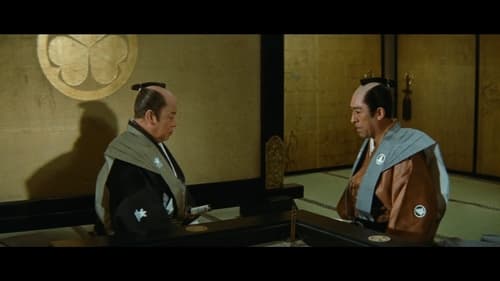
As Japan’s Tokugawa shogunate nears the end of its rule, Edo North Magistrate Toyama no Kinsan is called upon to judge the most difficult case of his career. In a masterfully woven tale, he has to face the truth about his estranged father’s possible involvement in a nefarious plot to take over rule of the Hizen Shimabara clan by assassinating the rightful lord, his son, and install one of Shogun Ienari’s offspring as daimyo.

A young son of a master of the Kuwana clan gets disowned for his rebellious behavior. After he goes from the mountains to the ocean defeating the evil, he becomes a fine man.

Village man
In this first episode, we are introduced to Takezo, what Musashi used to be before he became the man of legend. His beginning are not exactly auspicious. He sides with the Toyotomi at Sekigahara, and as a result finds himself on the losing side of the historic battle. He and his friend Matahachi manage to escape the slaughter although the latter is wounded in his leg. They stumble across the young Akemi who makes her living with her mother Oko by robbing corpses of their armor and anything else they can sell. Oko takes it into her head to seduce Matahachi, which she does first by skillfully sucking the gangrene from his blood, and then just by sucking.

Magistrate Kinshiro fights with a group of villains plotting the assassination of the Shogun in Edo.

When master swordsman Mikogami Genshiro of the Ono fencing school returns to find that his ailing sensei has been murdered in the dead of night, he must find the culprit and exact revenge. His return sets off a series of violent incidents and incites a high ranked female skilled in sword to test his mettle after he unwittingly offends her. The ever delightful Misora Hibari co-stars with the great Tsuruta Koji in this exciting tale set in the earliest days of the Tokugawa shogunate. Lots of exciting swordfights highlight this entertaining motion picture!

Detective Hanshichi (Kataoka Chiezo) solves 3 mysterious murder cases. Great story and an impressive all-star cast, a must see!
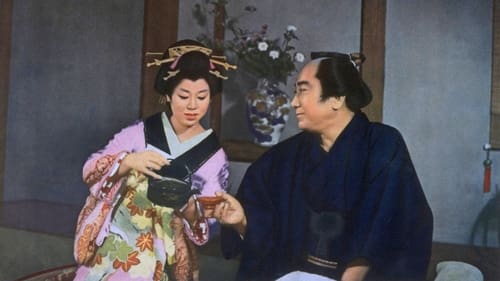
A successful textile industrialist from the provinces, who is beloved by his employees for his kindness, cannot find a wife because of a disfiguring birthmark on his face. Even the courtesans in Yoshiwara refuse to entertain him, until an indentured peasant prostitute, Tamarazu, takes the unsavoury assignment and treats him with brash tenderness.

One of Japan's most enduring stories is the true-life yakuza boss Jirocho of Shimizu and his gang as they took over the Tokaido Highroad and went on to everlasting fame. Many of the gang members have become household names although their backgrounds and how they came to join the group are mostly lost in the mists of a time gone by. This is the tale of Masa, who arrived in Shimizu Port hungry and down on his luck. His adventures contain some light-hearted moments as he meets up with the other gang members and goes on to join the group and become one of their best swordsmen. A truly exciting tale starring the ever-popular Okawa Hashizo along with all-time great Okochi Denjiro.

Taisuke is kind-hearted but overall lacks ambition. Taizo is smarter, but given to fits of emotion and impulsive violence. The samurai brothers fight against corruption in a castle.
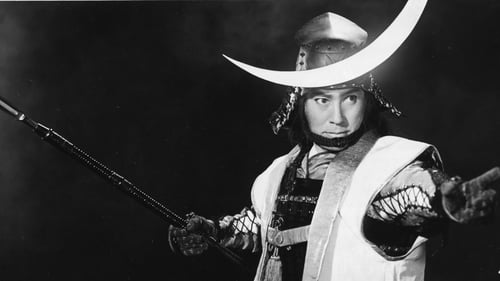
This subversive period film features a hotheaded young samurai, Kurodo, who threatens to commit harakiri in response to the humiliation meted out to his family by the Shogun. The film critiques the inhumanity of feudal obligations, and Uchida’s direction slyly satirizes the contemporary cinematic audience, whose taste for onscreen bloodshed is mirrored in a crowd gathering to watch the protagonist’s planned suicide. The Master Spearman is imbued with Uchida’s characteristic blend of dark humor and stylized action, and Ryutaro Otomo gives an admirable performance in the lead.

Early film by Eiichi Kudô.
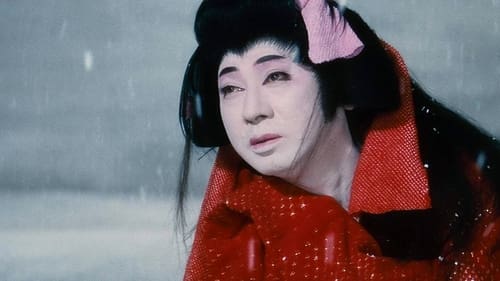
Nakamura Yukinojo gains popularity in Edo's kabuki scene as a handsome onnagata (a male actor who plays female roles). But hidden behind the placid expression of his stage face is a deep grudge for the men responsible for dishonoring his parents' names and leading them to suicide when he was still a child. When he discovers that the mastermind behind those crimes has come to see him act onstage, he begins in earnest to plot his revenge. With the help of a renowned Robin Hood-like thief named Yamitaro, he makes out his first target: the daughter of the man who orchestrated his parents' demise.
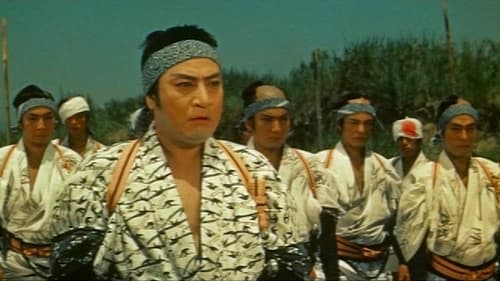
One of the great stories from Japan’s rich history comes to life in this true tale of the bloody showdown between two rival yakuza gangs in the 1840’s. The battle between Boss Sukegoro of Iioka and Boss Shigezo of Sasagawa has been portrayed many times, most notably in the first Zatoichi film, where the blind man befriends the tubercular ronin Hirate Miki, before cutting him down in one of the great duels in cinema history. This all-star extravaganza pulls out all the stops, with appearances by virtually all of the great actors and actresses from Toei’s studio at the time. Ichikawa Utaemon’s portrayal of the kind-hearted, noble yakuza boss Shigezo of Sasagawa contrasts sharply with the devious Sukegoro of Iioka. Corrupt as he may have been, his men were all willing to give up their lives for him.

Five swordsmen are murdered and hung from a tree and the chase is on to find the killers. Two magistrates pursue the leads to solve the crime and it leads to a potential conspiracy to kill the Shogun.

Saotome, a sword master and guard of the Shogunate, pursues the mystery of a deadly aerial weapon that is responsible for the multiple deaths in town.
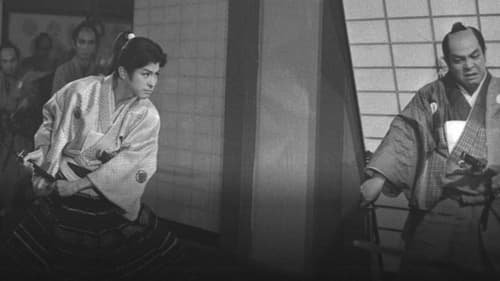
These are the first two parts of the popular series in which a young samurai learns that he is the illegitimate son of the Shogun. Hoping to reunite with his birth father, Shogun Yoshimune, he heads for the castle.
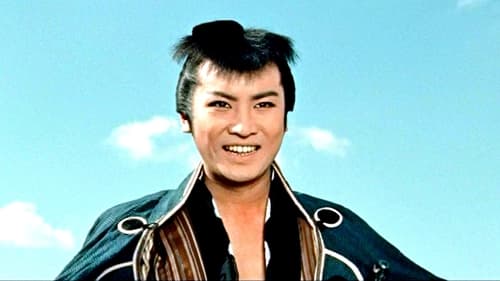
When Boss Juzo's Shinmachi Yakuza family struck fear into the hearts of his adversaries, Boss Shohei's Okabe Yakuza family with a merciless gang of raiders, Itaro of Asama was missing. With the courage of a lion he had gone off to face the enemy and settle the score all by himself. As a result he had to take the blame in place of Boss Shohei, and went off to adventures on his own.

Shiba Jipposai
One of Japan’s most popular folklore characters, Tange Sazen, the one-eyed and one-armed swordsman, must rescue the Yagyu clan from the treachery of a master plotting to take control over a sword fighting school.


Tozawa Hakunsai
Durante la Era de las Guerras (Era Sengoku), Tokugawa Ieyasu y Toyotomi Hideyoshi compiten por el poder y cada uno usa sus armas secretas para tratar de derrotar al otro. Momochi Sandayu de Iga, junto con su discípulo Ishikawa Goemon, reciben la orden de Ieyasu de asesinar a Hideyoshi y obtener los planos de la fortaleza oculta dentro del Castillo de Osaka. Mientras tanto, el grupo Koga se organiza para tratar de defender el castillo por la paz de la nación. Superando todos los trucos de Sandayu, Torawakamaru protege el dibujo, y cuando Ieyasu descubre una manera de mantener un combate entre Koga e Iga, los dos maestros luchan en la batalla ninja más grande jamás celebrada. Los efectos son realmente espectaculares en esta clásica película de ninjas de Toei.

The conclusion of the story of famed swordsman, Sasaki Kojiro. After surviving a series of daring adventures, Kojiro seems to have finally discovered the ultimate happiness in life when he is reunited with Tone, the love of his life. However, his days of happiness are overshadowed by an upcoming duel with his fateful enemy Miyamoto Musashi.

This most celebrated all-star movie version of the popular series features Tsukigata Ryunosuke as Mito Komon, the sage who wanders the countryside rectifying government corruption along with his faithful attendants Suke and Kaku.

First part of the famous Dai-bosatsu toge trilogy, based on Kaizan Nakazato’s unfinished long series of novels (41 books, written from 1913 to 1941). Set in the last period of the Tokugawa Shogunate, Daibosatsu Toge tells the story of Tsuke Ryunosuke, a nihilistic swordmaster who doesnt hesitate to kill anyone, bad or good. Despite the authors explicit refusal, the series were later made into plays and movies several times.
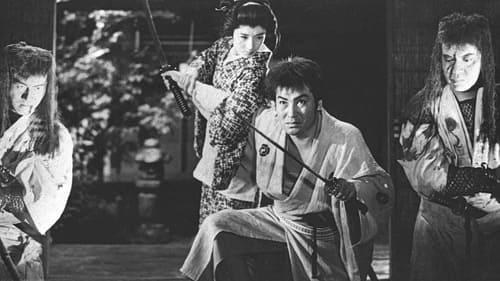
Revenge breeds revenge. Ikuta Denpachiro, the martial arts instructor of the Honda family in Koriyama, lost a fight to the young samurai Enjo Sozaemon in a martial arts tournament and as a result lost his position and was expelled from home. Wanting to avenge the mockery of himself, he treacherously kills Sozaemon and goes on the run. After long wanderings, Denpachiro, it would seem, finds a peaceful life and love in the face of a devoted and courageous Okatsu, but the brothers of the murdered man are already on his trail, wanting to avenge the death of Sozaemon. The film is based on a story by Itaro Yamagami.

Adaptation of the novel by Kan Shimozawa.

This adaptation of a Hideji Hojo novel, about the historical uprising of the Kuroda clan in 1633, is told through the eyes of retainer, Daizen. As his clan’s new leader, Tadayuki, becomes increasingly militant in his opposition to the Tokugawa shogunate, Daizen is forced to reconcile his loyalty to the clan with his loyalty to Tadayuki, who seems dead set on entangling the clan in destructive conflict. The Kuroda Affair’s mise-en-scène is said to have influenced future Toei director Eiichi Kudo. The film also features two of the greatest stars of Japanese period cinema, Chiezo Kataoka and Ryutaro Otomo.

Kabuki adaptation: A princess, a figure from the literary past who anticipates a modern woman, tempts a self righteous priest.

The mysterious black hooded man, Kurozukin, helps transport funds raised to fight against the government.
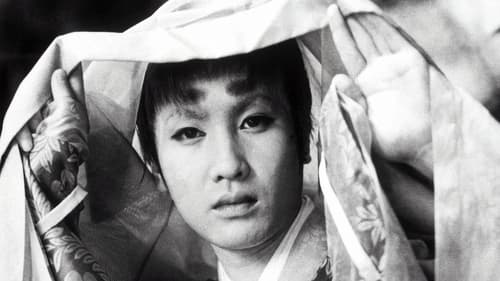
A historical scroll depicting the story of the tragic fate of the young samurai Minamoto Yoshitsune, based on the novel by Genzo Murakami. The action of the first part takes place in the late Heian period, when the Taira clan came to power, and Genji was oppressed. The great dream and ambitions of Genkuro Yoshitsune in his youth are depicted, he joins forces with his older brother Yoritomo to raise an army to defeat the Taira clan, and the second part depicts the fall of the clan, persecution and murder.
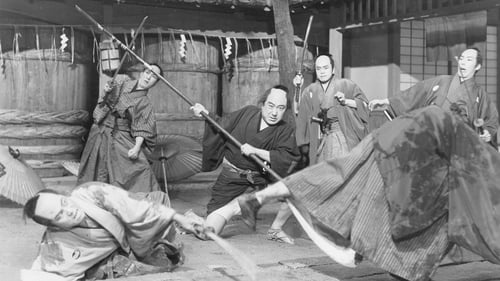
Road movie tragicómica ambientada durante el período Edo. La historia de un samurái, sus dos sirvientes, incluido el portador de lanzas Genpachi, y las diversas personas que conocen en su viaje, incluido un policía que persigue a un ladrón, un niño pequeño y una mujer que será vendida como prostituta.

Hanbei
A group of five law enforcers search Edo for a missing sword.

First film of the The Black Hooded Man series.

Adaptation of the Riichi Yokomitsu novel.

The final film in the 1953 trilogy based on the long novel series The Great Bodhisattva Pass.

The second film in the 1953 trilogy based on the long novel series The Great Bodhisattva Pass.

film directed by Tai Katô

Swordfighting instructor Danpei works at a local theater in Tokyo, instructing the actors how to fight realistically.

En el Tokyo de 1885, Kikunosuke Onoue, hijo de un importante actor, descubre, desolado, que es aplaudido únicamente por ser el heredero de su padre y que, en realidad, el público se mofa de sus interpretaciones. La única persona que se atreve a ser sincera con él es Otoku, la niñera de los hijos de su hermano. pero precisamente por ello es despedida, y a Kikunosuke le prohiben verla por temor a los rumores que se desatarían por su relación con una sirvienta.

dir: Teinosuke Kinugasa

Ichirôbei - rice shop owner
Two cowardly palanquin carriers know the culprit of a murder but are too scared to report it to the police. In the mean time, an innocent man is arrested as the murderer and chaos ensues. Pre-war jidaigeki film.

Saburobee Nagasakiya
An onnagata (female impersonator) of a Kabuki troupe avenges his parents' deaths. Remade in 1963 as Yukinojô Henge.


Genshirō Shindō
This 1932 adaptation is the earliest sound version of the ever-popular and much-filmed Chushingura story of the loyal 47 retainers who avenged their feudal lord after he was obliged to commit hara-kiri due to the machinations of a villainous courtier. As the first sound version of the classic narrative, the film was something of an event, and employed a stellar cast, who give a roster of memorable performances. Director Teinosuke Kinugasa was primarily a specialist in jidai-geki (period films), such as the internationally celebrated Gate of Hell (Jigokumon, 1953), and although he is now most famous as the maker of the avant-garde silent films A Page of Madness (Kurutta ichipeji, 1926) and Crossroads (Jujiro, 1928), Chushingura is in fact more typical of his output than those experimental works. The film ranked third in that year’s Kinema Junpo critics’ poll, and Joseph Anderson and Donald Richie noted that 'not only the sound but the quick cutting was admired by many critics.









































